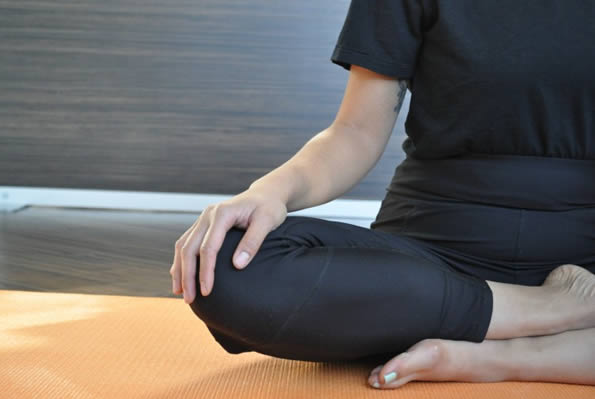Learn All About Pelvic Organ Prolapse and the Role of Yoga in Recovery
Yoga can help manage pelvic organ prolapse, but there are also some poses, movements and breathing methods that could make the condition worse.
What is a Pelvic Organ Prolapse?
"Prolapse" refers to a descending or drooping of organs. Pelvic organ prolapse (POP) refers to the prolapse or drooping of any of the pelvic floor organs, including: the bladder, uterus, vagina, small bowel, or rectum. These organs are said to prolapse if they descend into or outside of the vaginal canal or anus.
Read our previous blog for more information on prolapse and how pelvic floor therapy can help.
Which yoga poses will help and which poses will make it worse?
Yoga has been found to help women with urinary incontinence, but will it help with prolapse?
There are hundreds of yoga poses as well as breathing exercises in the practice of yoga. Some of these poses can help manage or reduce the negative sensation felt with organ prolapse. Other poses and breathwork, however, may make the condition worse. This is due to the role of intra-abdominal pressure (IAP) on the organs and the pelvic floor. Prolapse occurs when pressure in the abdomen is greater than the strength of the pelvic floor, the connective tissue, and deep core muscles that help keep organs in their place.
It is important to note that yoga by itself will not reverse a pelvic organ prolapse. There are many factors and behaviors that contribute to prolapse. It is best to be seen by a licensed pelvic floor physical therapist for a complete examination and treatment plan for your condition.
Yoga Poses That Will Help
Yoga poses that increase pelvic and abdominal stability without significant increases intra-abdominal pressure will help with prolapse.
Mula Bandha:
In a study published in 2018 by the International Journal of Yoga, the technique of Mula Bandha may be beneficial to mild pelvic organ prolapse. Mula bandha is a technique that engages the pelvic floor muscles, along with the deep core muscles. See a yoga therapist or pelvic floor physical therapist for more instruction on proper pelvic floor muscle engagement and how to incorporate it with this exercise.
Supported poses:
- Legs up the Wall with a block or folded blanket under the pelvis.
- Supported Bridge pose with a yoga block under the sacrum.
- Reclined butterfly pose with blocks under the knees.
Breathing:
Do not hold your breath when you have a prolapse, whether you are lifting a bag of groceries or practicing yoga.
Holding your breath will create extra pressure in the abdomen, which will encourage your organs to migrate further south. Practice deep breathing on a regular basis and also exhale with movement.
Exhale with Movement - Do not hold your breath while you move. Try exhaling with the following activities:
- Transitioning from lying down to sitting up
- Transitioning from sitting to standing
- While lifting anything (baby, groceries)
- While pushing anything (strollers, trash can, shoveling)
- While bending over to empty the dishwasher, take out laundry, weeding your garden, etc.
- Putting on your socks, shoes and pants
- Getting out of the car
- During exercise
- Reaching overhead
Poses that Help with Body Alignment
- Stand in mountain pose and find a neutral pelvis and proper postural alignment.
- Practice chair pose with a block between the thighs, focusing on maintaining a neutral pelvic position and activation of the deep core muscles (transverse abdominus and pelvic floor).
Yoga Poses to Avoid
- Avoid or modify intense core exercises that increase intra-abdominal pressure (IAP) until cleared by a pelvic floor physical therapist.
- Double Leg Lift (Modification: raise one leg only)
- Boat Poses (Modification: raise one leg only)
- Plank Poses, including Chaturanga dandasana
- Uddiyana bandha (“belly lock”) – this muscular “lock” increases pressure around the prolapse and forces the organs down towards the pelvic floor
- Deep Squats without proper bracing will increase pressure on the pelvic floor
- Forward bends with wide legs
- Avoid jump-backs until you learn effective bracing from a pelvic floor therapist.
- Do not hold your breath! Breathe with movement and transitions between poses.
- Avoid heavy lifting, straining, or “pushing”
This applies to manual work and exercise (yardwork, heavy boxes), as well as having a bowel movement.
Read our previous article about body mechanics and prolapse on more tips on how to manage a prolapse.
When to See a Pelvic Floor physical therapist
It is important to note that yoga by itself will not reverse a pelvic organ prolapse. There are many factors and behaviors that contribute to prolapse. It is best to be seen by a pelvic floor therapist for a complete examination and treatment plan for your condition.
At Femina Physical Therapy, we offer personalized, one-on-one yoga therapy sessions that are geared towards your interests, body type, and condition. If you are in need of this therapy and have a little one at home that makes it difficult, many patients over the years have chosen to bring their babies with them to the session. We are proud to be a baby-friendly office and increase access to our services by making it easier for new moms to attend. Contact us to get started on your healing path.
Resources
Huang AJ, Jenny HE, Chesney MA, Schembri M, Subak LL. A Group-Based Yoga Therapy Intervention for Urinary Incontinence in Women: A Pilot Randomized Trial. Female pelvic medicine & reconstructive surgery. 2014;20(3):147-154. doi:10.1097/SPV.0000000000000072.
Prosko, S. Organ Prolapse and Yoga. https://www.yogauonline.com/yoga-for-pelvic-floor-health/organ-prolapse-and-yoga
Sweta K, Godbole A, Awasthi H, Pandey U. Effect of Mula Bandha Yoga in Mild Grade Pelvic Organ Prolapse: A Randomized Controlled Trial. International Journal of Yoga. 2018;11(2):116-121. doi:10.4103/ijoy.IJOY_32_17.
**This information is for educational purposes only and is not intended to replace the advice of your doctor.

